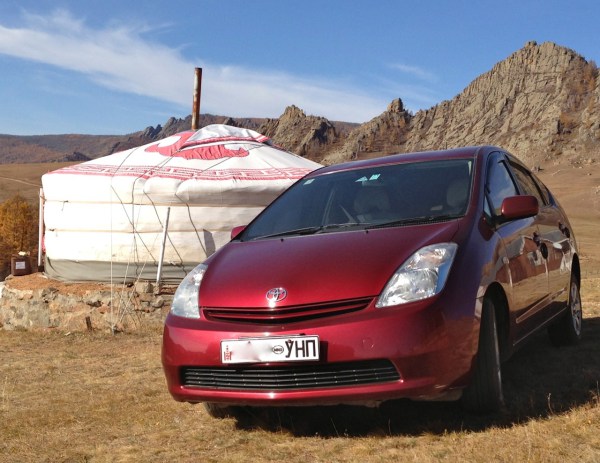
Mongolia: Japan’s Rubbish Heap
ELISE HONNINGDALSNES – The UB POST
Mongolia is embracing mass-market grey imports from Japan. This easy solution to get Mongolians cheap wheels will soon result in Mongolia being one of the biggest landfills for cars and dangerous waste in Asia.
Mongolians have fallen in love with Japan’s Toyota Prius, and are importing them to the country at the speed of light. Today, Priuses make up more than 13 percent of the passenger vehicles on Mongolian roads, according to government registry statistics. Last year, Mongolians imported just under 20,000 Priuses, which makes up 52.5 percent of Mongolia’s total vehicle import.
You would expect Mongolians to have jeeps, pickup trucks or motorbikes due to the sometimes rough landscape in the country. However, you would not expect them to be using hybrid cars. The unofficial car of Mongolia can be seen everywhere, even parked outside of a ger in the middle of nowhere. In Ulaanbaatar, three in five cars are suggested to be a Toyota Prius.
The main reason why Mongolians love their imported Toyota Priuses is because they easily start in the cold. Temperatures during winter in Mongolia often range from negative 20 °C to negative 40 °C, and this sometimes make it problematic for gasoline cars to start if they’ve been parked for a while.
Another reason why Mongolians love these cars is the price tag. Imports of second-hand hybrid cars to Mongolia are tax-free, making old Priuses from Japan the most affordable car there is on the market. A questionable fact about these cars is that they have the steering wheel on the left-hand side, while Mongolians drive on the right-hand side, leaving more room for accidents in the traffic.
Japan imposes high tax rates on older cars to keep its automotive manufacturing economy moving and they therefore sell off their old cars very cheap. Today, mass-market grey imports do make sense for developing countries such as Mongolia. But in the long run, Mongolia is becoming a massive dump for Japan’s old scrap, whilst at the same time boosting Japan’s car industry even further.
At present, Ulaanbaatar has severe pollution of both soil and air. This is generated from waste which has been improperly disposed. As the capital city has expanded so rapidly, there are not enough dumpsites for the waste produced in the city and people therefore dispose of their rubbish elsewhere. This means that battery packs and other dangerous goods can be found and used as toys by children. This puts children in danger and can lead to major accidents.
In Ulaanbaatar, it has been reported real-world fuel economy numbers of seven to nine liters per 100 km, which is at least 50 percent worse than what Toyota advertises and drivers report that batteries last less than 10 years, less if used irregularly.
Even though hybrid cars easily start in the cold, they do not work as intended in cold climate. They work as regular gasoline cars, with a massive battery pack pushing the car to use even more fuel than normal cars. These old cars also come with worn out batteries that needs to be dumped somewhere not long after being imported to the country. This means that Mongolians are basically paying Japan to take care of their dangerous waste.
It makes sense to drive Hybrid cars during summer, as it is cost-effective. However, Mongolia has a long and cold winter, meaning that car owners lose more than they gain by driving these cars. In cold places such as Mongolia, hybrid cars are not a good investment as it turns out to be expensive and it also affects the environment, contributing to the severe pollution in Mongolia’s capital city.


